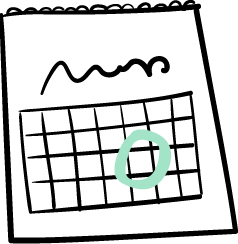Creating the presentation

What to include
The goal of your presentation is to provide a clear overview of your project, what you have gained from the experience, and how you have applied your degree knowledge to the real world.
Your presentation should describe the goal, focus question/objective, action plan, outcome, and any challenges or barriers encountered and how they were addressed. Make sure to consult your syllabus/assignment instructions to make sure you have included everything you need to include.
Getting unstuck
If you are having trouble getting started, here are some strategies to try to get unstuck:
- Start from the last slide and work backwards
- To get your juices flowing and make sure you have a clear understanding of what you need to cover in your presentation, try to summarize your presentation in 20 words or fewer
- Outline the "story" you want to tell with your presentation. (e.g. This is the problem encountered by population X, this is how people have tried and failed to address this problem in the past, this is how I attempted to solve it, and here is how it went)
- Use your proposal to guide your general presentation flow (just remember to add your findings!)
Prepare your visuals
A powerpoint, poster, or other visual is great as long as it aids audience understanding. Avoid powerpoints with too much info--don't overload text (use bullet points instead). Each slide should contain a single concept or theme and the slides should follow a logical story or order.
Before your presentation

Confidence is key
Make sure that you are confident with the presentation material. You want to be comfortable enough with the content that even if something goes wrong (e.g. the slides get out of order, your presentation is interrupted halfway through, etc.), you will be able to get back on track.
Practice makes perfect
Try to practice the presentation in front of other people or record yourself practicing on video. Practice speaking clearly, with appropriate speed and volume, and with confident body language. Time your practice rounds to make sure that you are within time limits.
Prepare for questions
Try to anticipate what kind of questions may be asked after your presentation. It can be helpful to prepare brief notes on how to answer potential questions.
Day of the presentation

Arrive early
Make sure to arrive at least 15 minutes prior to your presentation time.
Be prepared
Be prepared for any technical difficulties. Ensure you have several ways to access your Powerpoint/notes (e.g. on a USB, on a personal laptop, on cloud storage, via email, printed out, etc.) in case one method fails. Have any necessary cables or chargers you may need.
Dress your best
Dress code will vary depending on your program. Whatever the expected wardrobe, make sure you are neat and put together.
Following the presentation

Fulfill additional requirements
Depending on your program, there may be additional requirements following the oral presentation. Make sure to consult your syllabus to ensure that you have fulfilled all the requirements needed to graduate.

